?Funerary graves in Jabal Talbouna, Naama state, are they primitive attempts to build the pyramids
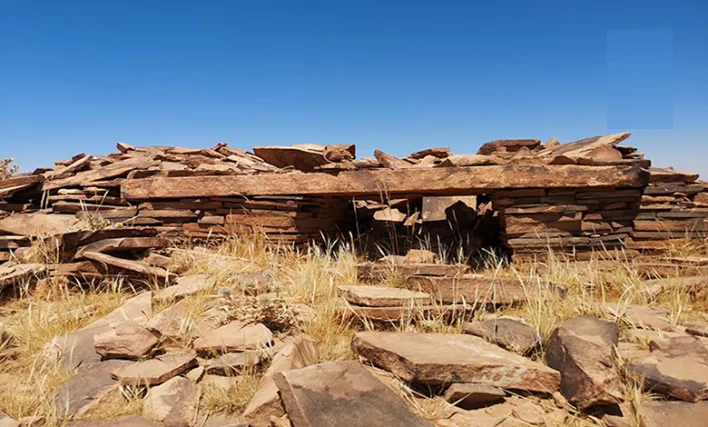
It is clear from archaeological excavations associated with prehistoric graves in North Africa that the ancestors of the Berbers believed in an afterlife. They were burying their dead in primitive pyramidal tombs known scientifically as the Tumulus, which is a very old tradition, and given the research that was conducted on many of these funerary graves in terms of their shape, geometry, contents, and even functions, the results of these studies lead us to believe that this tradition precedes the tradition of Building the pyramids in Egypt.
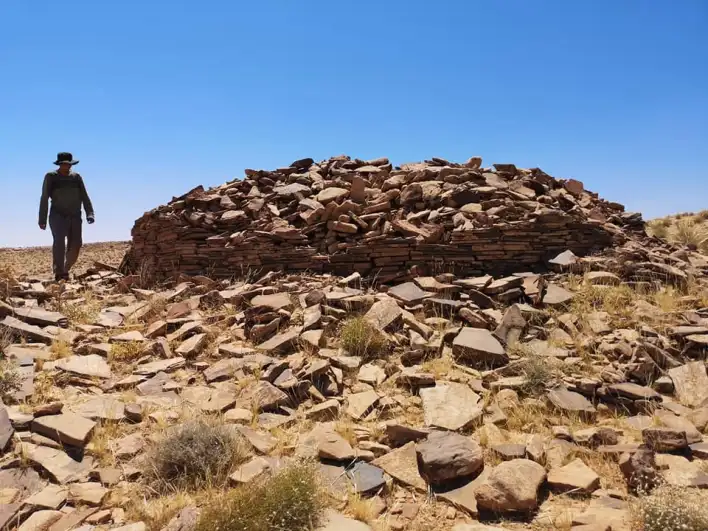
Funerary graves in Jabal Talbouna, Naama state
In terms of its function, it is mainly associated with the sacred.. death, afterlife, visits, blessing, magic.. as this sacred function begins from being a special method for burying a special dead - and in this you meet with the pyramids - so the spread of these funerary graves in this form and in a large number in The countries of the Maghreb may also explain to us the spread of the phenomenon of “mrapotism” or “veneration of shrines”. Any new religion in North Africa did not preclude the continuation of the rituals and customs of the well-established old religion.
As for the contents, many researchers who excavated in the area have found? Among them, Dosiny 1904 AD, and the scientist M. Butti 1905 A.D. contains many funerary items and tools inside, such as pottery, jewelry, and shells of ostrich eggs, in addition to the remains of the dead, which were often buried in a fetal position, with their edges painted with red ocher after removing the flesh from the bones. This, in my opinion, indicates the first Primitive attempts to mummify the dead before burial, just like the mummification phenomenon in ancient Egypt.
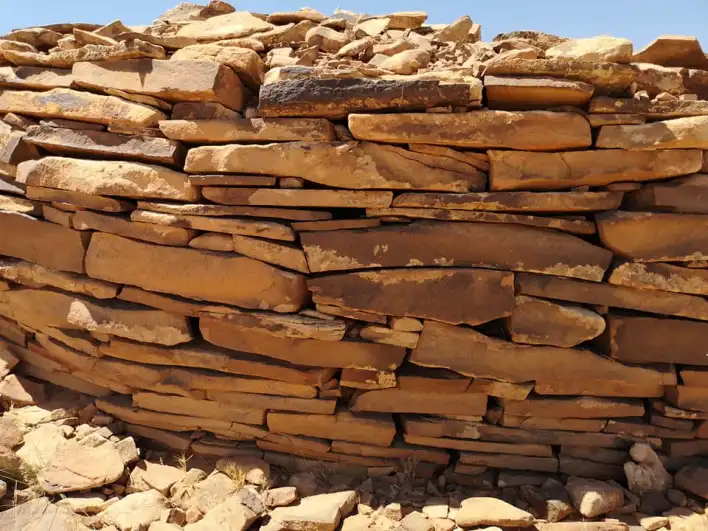
Funerary graves in Jabal Talbouna, Naama state
In terms of shape, these funerary tombs are somewhat similar to the pyramids of Egypt in terms of shape and design, although they are more primitive than them, and much less elaborate than the rest of the pyramids of lesser importance than the pyramids of Egypt. The remains of the dead mummified and buried in a fetal position, this belief makes the grave another transitional stage similar to the stage of pregnancy, through which the dead person passes to another new life.
These tombs have known several developments throughout history in terms of their shape, until they reached the royal shrines that are distinguished by their greatness and beautiful shape, which is evident in the Numidian pyramid, which reached a height of nineteen meters, as well as the Mauritian mausoleum, which reached a height of thirty meters.
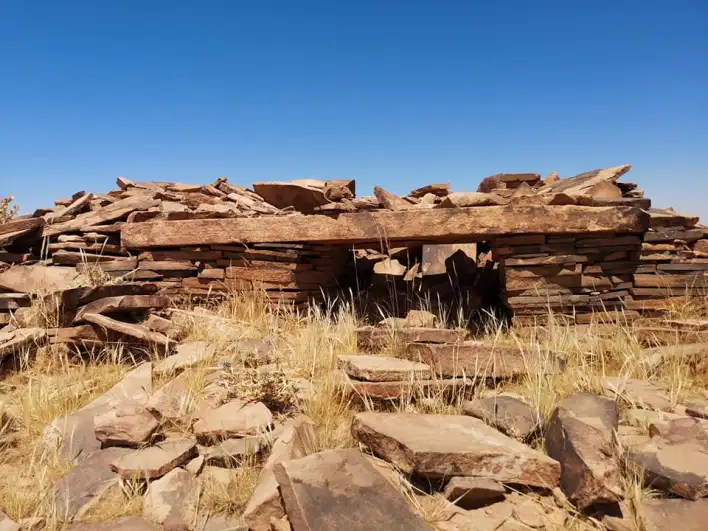
Today we will get to know one of these important and unknown historical cemeteries, which is considered a link between the first primitive funerary cemeteries and the advanced royal shrines. The most important and oldest of these funerary graves in the southwest region of Algeria. In a large area at the top of the hill, the visitor to the area is surprised by the presence of this large number of ancient funerary graves, which exceed 40 funerary graves in the form of circular pyramids of different sizes. They take a convex conical shape with a circular base built of dry flat stones, stacked together very carefully at a height of just over a meter above the surface of the ground. The dimensions of the graves vary according to their sizes, as their diameter ranges between 04 and 11 meters, and their height is between 02 and 3.5 meters. The circumference of the base may reach 30 meters.

These pyramidal tombs have rectangular openings on the opposite side to the east - with the sacred symbolism that this carries - leading to chambers built in the center of the tomb, the length of the side of which may reach 70 cm, and the length of the rock that was used as a beacon at the top of the entrance may reach 03 meters in length. . It appears that the purpose of its existence was for primitive doctrinal purposes, which is to allow its owner to communicate with the outside world. This funerary room is roofed with a large flat stone block, and it is built with carefully selected stones to form a funerary box built above the ground and not excavated inside the grave.
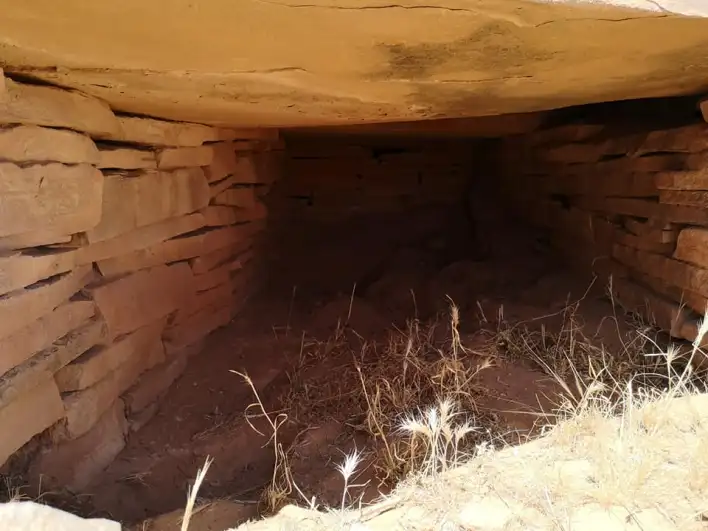
What distinguishes these funerary tombs mainly is the date of their construction. On the one hand, they are newer compared to other known Timilis tombs, which come in the form of heaps of collected stones, and on the other hand, they are primitive compared to other funerary monuments in northern Algeria, such as the pyramids of the Pattiart wall that were built in The borders of the fourth and seventh centuries BC, the tomb of Imdgasen dating back to the third century BC, the tomb of Massinissa dating back to the second century BC, and after that the tomb of Mauritania dating back to the first century BC known as the Roumieh tomb.
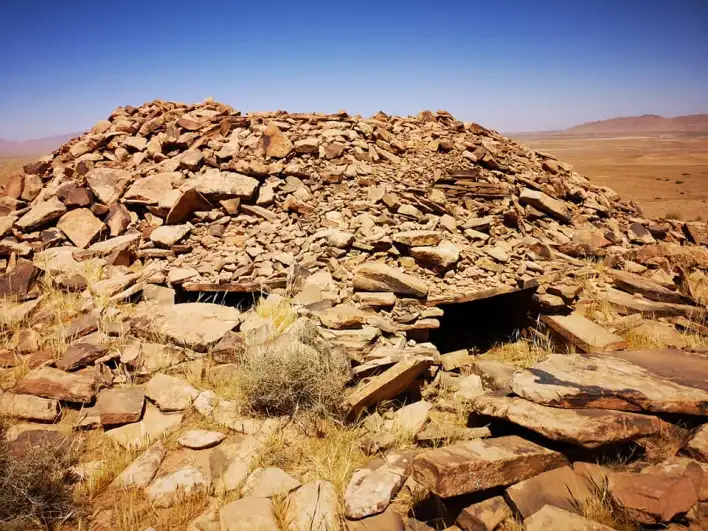
Which is located at the foot of the mountain, which is closer to the dirt road used by trucks collecting building stones, through the use of its stones in construction operations by the residents of the region who are ignorant of its importance, or looted by treasure hunters who circulated the idea that it is full of gold and precious metals, which is an idea It is old for the majority of those who know these graves, and it is a misconception that has salivated every sinful greed in the custom of our customs, a transgressor of the sanctity of the dead, and their impact appears clearly through exhuming graves, opening their funerary chambers, looting their contents and sabotaging their geometric shape, which We point out that these funerary graves have been exposed in their entirety to looting and vandalism, especially the graves. This requires researchers and guardians to expedite specialized scientific studies as soon as possible in order to determine the time period to which they refer, in addition to the possibility of classifying and protecting them before the disappearance and extinction of these monuments. from the region.
Source: websites

